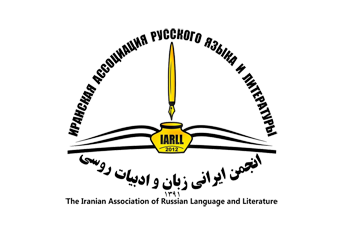EXPERIMENTAL STUDY OF PRONUNCIATION OF SOUND [Ы] IN RUSSIAN WHEN TEACHING IRANIAN STUDENTS
DOI:
https://doi.org/10.61186/iarll.24.10Keywords:
Russian Vowel, Praat Software, Acoustic Characteristics, Articulation, Intensity, Duration, FormantAbstract
This study investigates the pronunciation of the Russian sound [Ы] among Iranian students, comparing their articulation to standard Russian pronunciation. It identifies specific challenges faced by these learners and proposes targeted exercises aimed at improving their accent. Given the lack of a natural language immersion environment, it is essential to explore effective methods for enhancing language skills. The influence of students' native language can either facilitate or impede the acquisition of a second language. Findings from this research reveal that while attaining native-like pronunciation poses significant challenges, dedicated practice can enable students to approximate the pronunciation of native Russian speakers. This capability is vital for achieving the primary objective of language learning: effective communication. The article provides a detailed examination of the duration, intensity, and formants (F1 and F2) of the target sound, facilitating the identification of atypical tongue movements and lip configurations. Through this analysis, the study contributes to a deeper understanding of pronunciation challenges in second language acquisition, particularly in the context of Iranian learners studying Russian.
Extended abstract:
The second language is learned through the framework of the first language, and its words are understood not in relation to the surrounding objects but by referencing the concepts and titles of the first language. The interference of elements from the first language is considered one of the fundamental challenges in learning a second language. According to this theory, an accurate comparison of the two languages is key to successful language education.
The phonetic system of any language includes sounds specific to that language, which may not exist in other languages. This study compares the pronunciation of Iranian students with standard Russian pronunciation, identifying specific issues and proposing targeted exercises to improve their accent. In the absence of a natural language environment, it is essential to find optimal methods to enhance students' language skills. The students' native language can either facilitate or hinder the learning of a second language.
Using modern technologies, this study employs innovative methods for phonetic analysis in the Russian language. These methods provide opportunities to improve students' learning processes. The approach proposed in this article combines practical and theoretical methods.
Since the sound [ы] does not exist in the phonetic system of the Persian language, even when students attempt to pronounce it accurately, the results show that their pronunciation is not close to that of native Russian speakers.
The findings of this study indicate that, although achieving native-like pronunciation is challenging, with extensive practice, students can approximate the pronunciation of native Russian speakers. This is crucial for achieving the primary goal of language learning: effective communication.
This article examines and compares the duration, intensity, and formants (F1 and F2) of sounds in detail. This comparison helps identify abnormal tongue movements and lip shapes during pronunciation.
Using modern technologies, this study applies new methods for phonetic analysis in the Russian language. Such methods offer opportunities to enhance students' learning processes. The proposed method in this article is a combination of practical and theoretical approaches.
Our research shows that when the sound [ы] is pronounced in isolation within a single word, it is somewhat closer to the pronunciation of a native Russian speaker. However, in sentences, it is pronounced with a completely different sound. This sound exhibits unique features in the pronunciation of Iranian students and does not resemble any sound in the phonetic systems of either Persian or Russian. In fact, the indices obtained in the tables correspond to the features of the vowel sound /i/ in the Persian language.
The results of this study can be applied to Iranian students at all academic levels. Additionally, these findings can be used in preparing educational resources for editing and correcting the pronunciation of Iranian students. Further comparative studies of other sounds in the Russian language, particularly vowels, are also recommended.
Downloads
Published
How to Cite
Issue
Section
License
Copyright (c) 2024 Issledovatel'skiy Zhurnal Russkogo Yazyka I Literatury

This work is licensed under a Creative Commons Attribution 4.0 International License.
![]()
"Creative Commons Attribution 4.0 International (CC-BY 4.0)"


